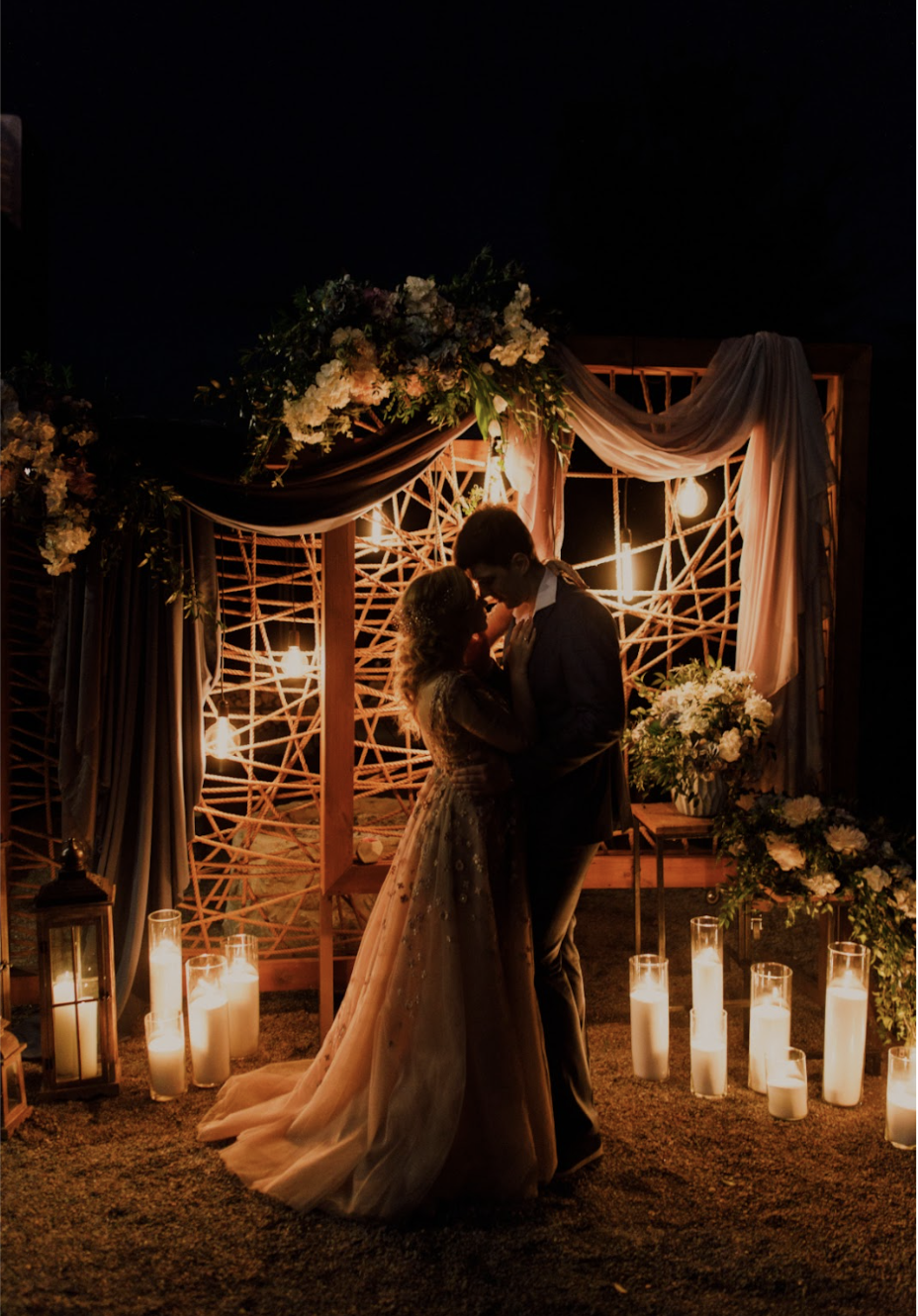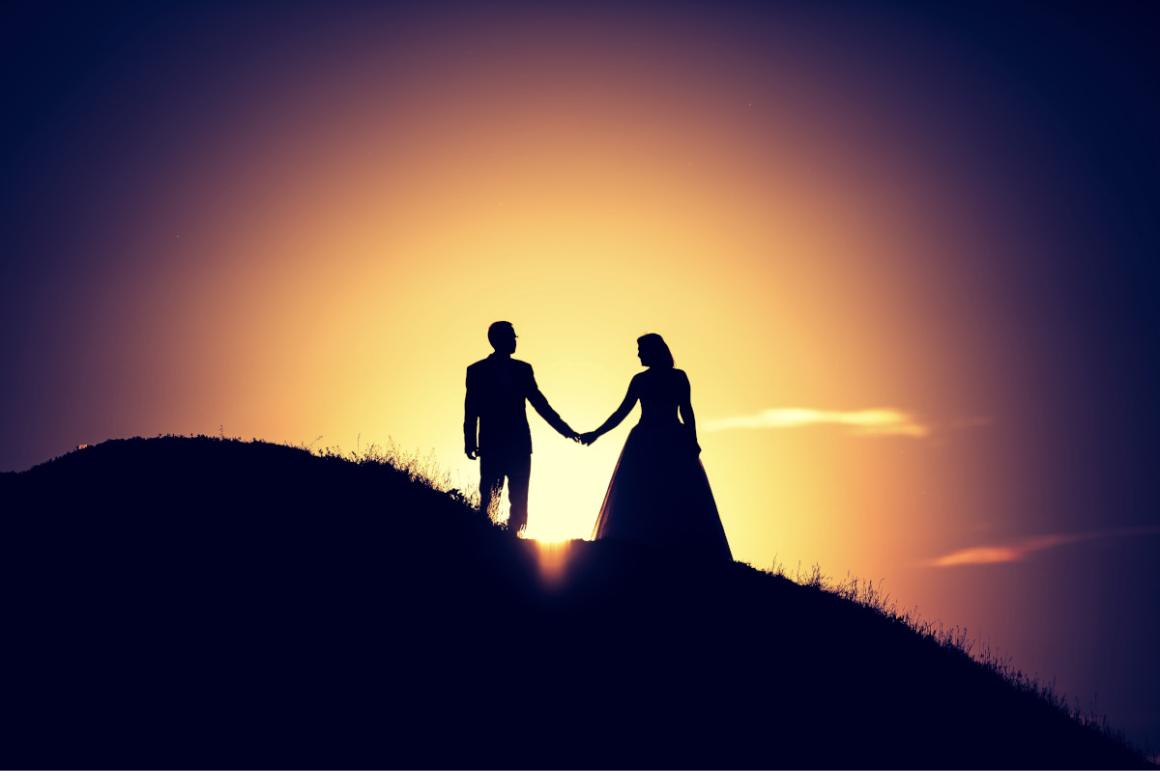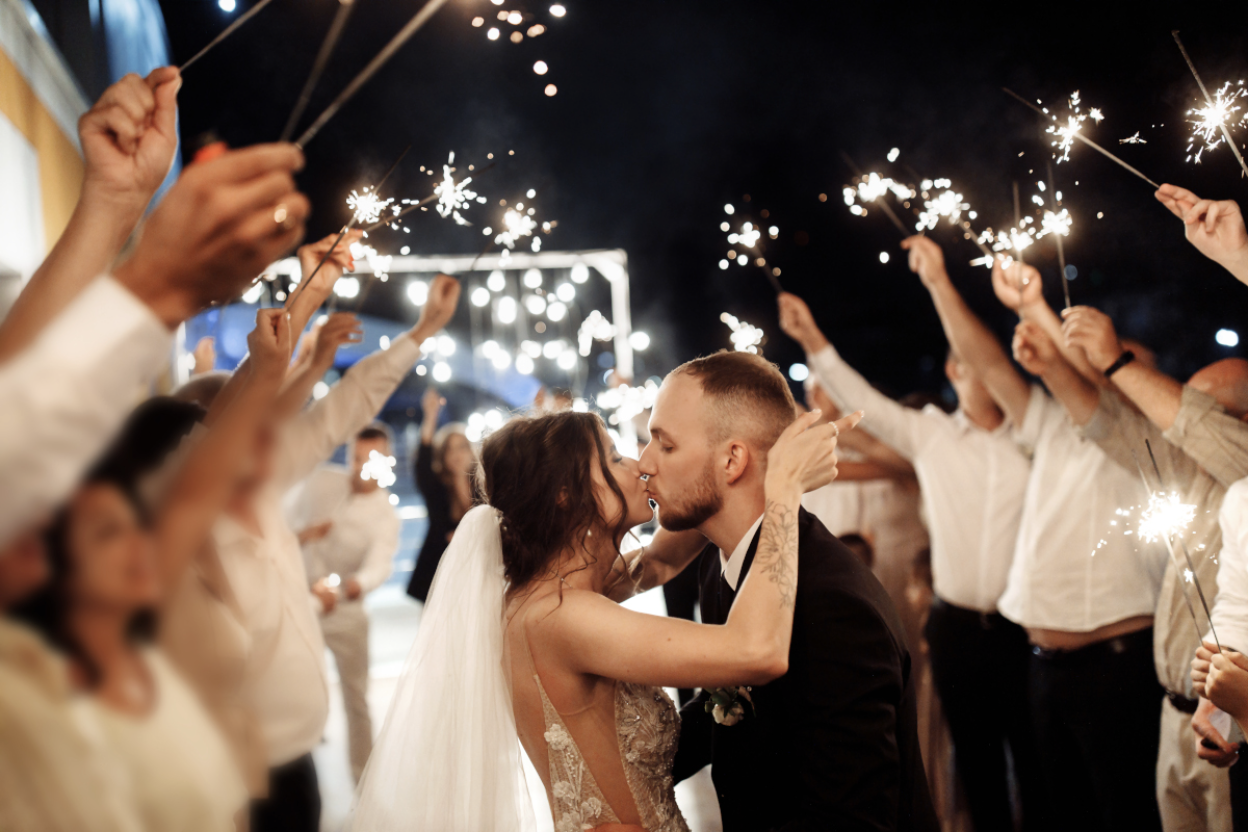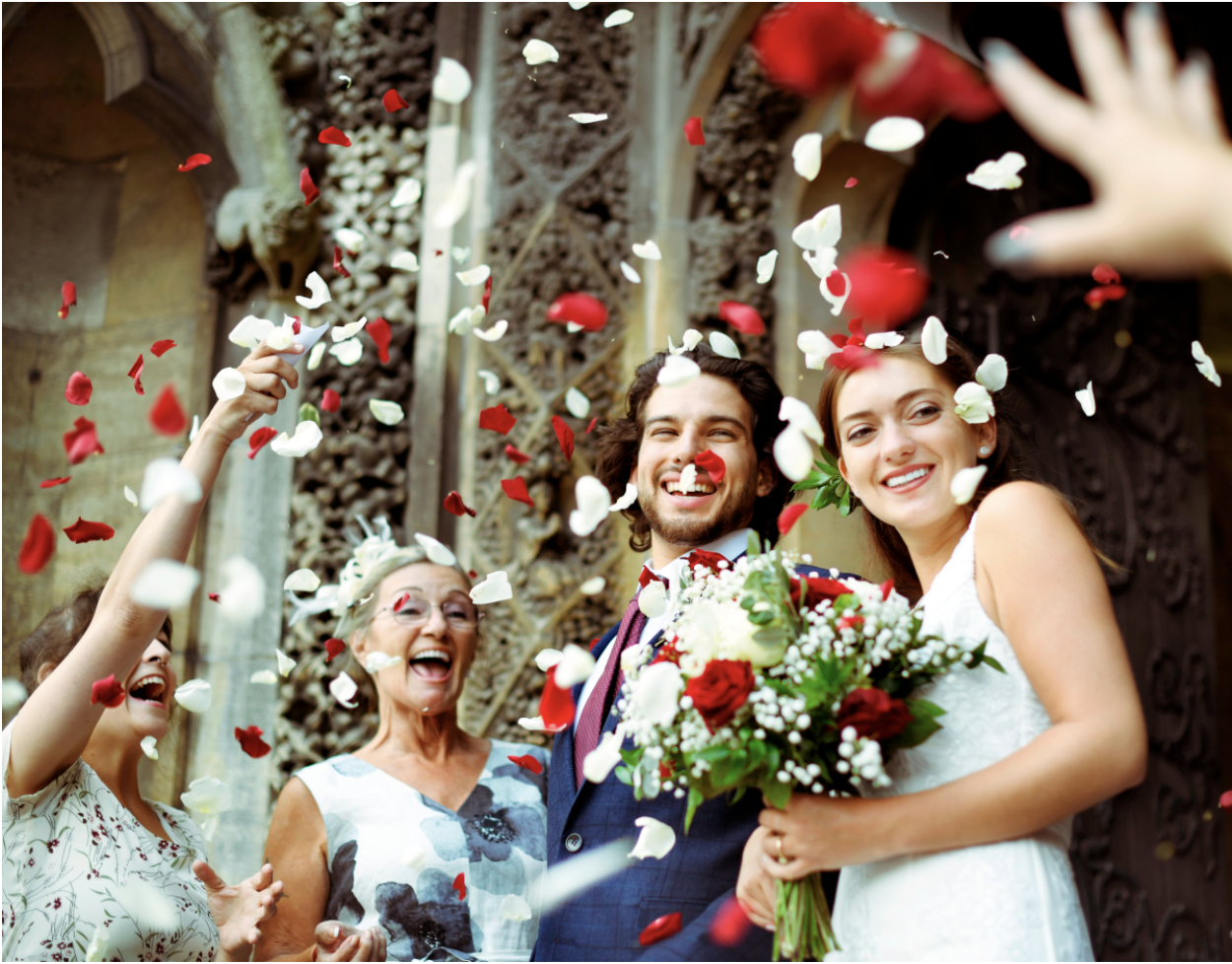Getting Great Shots: Posing and Lighting Tips for Wedding Photos

Wedding photographs are some of the most treasured and lasting mementos of a couple's special day. They immortalise the romance, joy and intimacy of the occasion in still frames, preserving memories for the newlyweds and their families to cherish for a lifetime.
Your images will tell the visual story of your relationship for generations to come, so it’s important that the end result is just right. With that in mind, here are some tips for perfect poses and beautifully lit photos, and ideas to discuss with your wedding photographer.
Capture shots by candlelight
Candlelight adds a warm, romantic glow perfect for wedding reception photos. Start by taking some test shots at the reception venue before guests arrive to check exposure. Make sure your photographer looks for opportunities to photograph you as a couple or your wedding party surrounded by candlelight, such as moments like the couple's first dance silhouetted against a candlelit backdrop.
Likewise, you can compose detailed shots of the wedding cake, flowers or rings set amidst flickering candles. Embrace the moody, intimate feel by keeping images subtly dark rather than only shooting in bright natural light. With the right metering and post-processing, candlelit wedding images can have an incredibly romantic, timeless quality.
Make use of shadows and silhouettes

[Image source: Deposit photos]
Silhouettes can add compelling dimension, visual drama and storytelling to wedding photographs. Backlighting is an effective technique for creating striking silhouettes. Couples should be backlit by a vibrant light source like a sunset, stained glass window or open doorway, letting the couple's features fall into shadow. This will beautifully frame their silhouette shapes against the light. Newlyweds can also ask to be photographed in profile as they walk down the aisle or dance, using a flash or spotlight behind them to accentuate their outlines even more.
Incorporate the interplay of light and shadow in detail shots as well. Light streaming through a bride's lace dress or floral bouquets highlights intricate textures beautifully. Look for opportunities to photograph artistic shadow patterns cast on surfaces like walls or floors, or have the couple hold hands to purposefully cast a heart-shaped shadow for romantic symbolism.
Opt for candid moments
Some of the most memorable wedding photos come from candid, unposed shots. So, couples should be sure to ask their photographer to look for opportunities to capture authentic interactions and emotions between the bride and groom rather than just focusing on staged, posed photos.
Photos of couples while they are gazing lovingly into each other's eyes, holding hands, sharing a private joke or stealing a kiss when they think no one is looking are the quiet moments that convey an intimate connection between the couple better than any posed photo ever could.
Incorporating Props and Architecture
Take advantage of props, architectural features and other environmental elements to add interest to your wedding portraits. If the ceremony or reception includes a stairway, utilise this to pose the wedding party in staggered rows across the steps. Or take a photograph sitting together a few steps up. For outdoor weddings, pose subjects seated in wooden deck chairs or on benches surrounded by nature.
You should also make use of architectural details like windows, columns, archways or door frames to naturally frame portraits. If the venue features a classic fireplace or antique bar cart, incorporate these elements – not only for beautiful photos but also to immortalise the venue in your memories of the day. With creativity, you can utilise your surroundings to enhance your overall wedding photo storytelling.

[Image source: Deposit photos]
The 8 Points of Posing
The "8 points of posing" technique provides a useful checklist to ensure flattering poses. The 8 points are your head, chin, shoulders, arms, hands, waist, knees and feet. So, each time you pose for a photo, you can scan over each of these areas and adjust and tweak any one of the points as needed to achieve an overall cohesive, attractive pose.
Once you’re set in a strong 8-point pose, your photographer can then shoot the same basic pose from multiple angles. While the posing remains constant, the different perspectives add more variety and visual interest to your photograph set. Having the core pose locked in, based on the 8 points, means you'll get great shots from any camera angle.
You can also utilise the 8 points approach with groups like the wedding party. Make sure each member of the group is paying attention to each set of 8 points – collectively, it will result in a great photo where everyone looks their best and is facing the right way. Check angles of heads, spacing between people, hand placement and other subtleties. With practice, analysing the 8 points of posing becomes an intuitive checklist for composing flattering portraits every time.
Pictures in Motion
While posed portraits certainly have their place in wedding photography, images really come alive when you capture candid moments and movement. Some couples feel awkward standing rigidly still and posing for the camera, so the solution is to photograph them while they're naturally in motion, embracing, dancing or laughing together. Take Charlie and Lucy’s Physic Garden wedding as a great example – from bubbles to dancing and laughing, the mix of motion shots creates a more relaxed set of photos that capture the fun of the day.

[Image source: Deposit photos]
Photographers can capture the bride and groom walking down the aisle, arms locked together, or snap the motion of them exiting the ceremony through a flurry of swirling flower petals. At the reception, candid shots of the first dance as you gaze lovingly in each other's eyes and sway together makes a perfect image. You can also stage fun motion shots like having the groomsmen jump in the air together. The combination of a fast shutter speed and continuous shooting allows you to freeze the peak moment of action and emotion.
Mastering posing and lighting techniques truly elevates your wedding photography from mediocre to magnificent. By applying these posing and lighting strategies, you can be sure that your photos will honour the gravity and emotion of the event through skillfully crafted, artful images.

[Image source: Deposit photos]